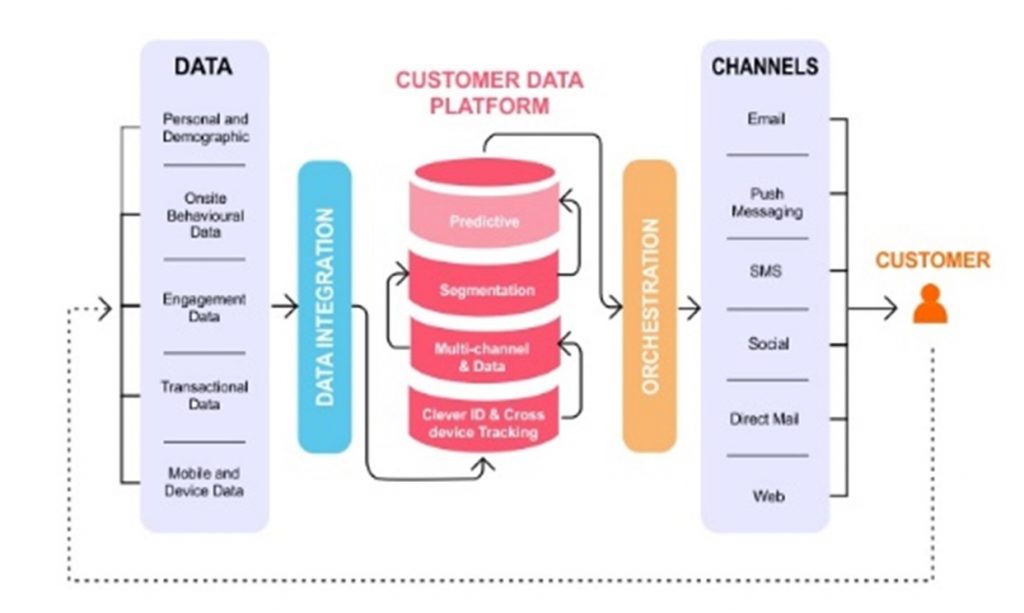CDP, or Customer Data Platform, is a platform that provides a unified view of every customer that has interacted with their brand. The key to unlocking exceptional customer experience is knowing your customers. Well, CDP does hit the bulls-eye with this.
Okay, so consider this. As a customer, before you lock in what you want to buy, you’re most likely to Google search the product, read up reviews, check out the retailer’s offering of what you want, scroll through the website, navigate the app so on and so forth. Chances are that you’ve visited multiple channels where the brand is active before you actually click on buy.
And you will relate to the email follow-ups, the push notifications, and the Facebook Ads that have been following you since the moment you started looking for your product.
The point is that all of these things are only possible because marketers have the data to know exactly what they want. Clearly, CDP needs data to deliver what it promises. Data really is the base for building on your marketing efforts.
There’s more to it.
As important as it is to gather data from all possible sources, it’s equally important to get the right kind of data and have a CDP that stitches it together to give a 360-degree view of your customers.
The data CDP deals With
If CDP is on your list, you’ll have to understand what CDP looks at and how this data is integrated.
To begin with, CDP collects data from both online and offline channels like web tracking tools, marketing automation, CRMs, and data warehouses, typically through APIs, and pans out the entire customer journey right across all these channels.
It starts with knowing ‘Who your customer is.’ CDP identifies a customer’s Identity or attributes essentially in terms of name, contact, and other personal details like birthdays. It’s important to note that, as this data is often identifiable, your CDP must be well-protected using commercial security systems and access control policies.
The next thing a CDP is looking at is ‘What is your customer doing.’ This taps into the actions customers take every time they interact with you. This data includes a customer’s website visits (page clicked on/product viewed), emails opened/clicked on, app engagements, and the activities across any other channels you’re active on.
Then there’s the transactional data of the customer in terms of purchases, returns, and the sorts of these.
All campaign metrics in terms of engagement, impressions, reach, and data gathered from other data management systems, like CRM, are also captured by CDP.
The data that CDP works on fits into one of the above categories. All of this data comes from all possible sources and in all possible formats and the chances of your existing system to read all formats are rather bleak.
But that’s not something you would have to worry about with CDP. It comes with the ability to ingest data in any format and create something useful out of it.
The bottom line is that every useful piece of customer data is gathered and analyzed by the Customer Data Platform to give you a single unified view of each customer.
How does it work?
You’re probably wondering how CDP does this. In a nutshell, it works in three steps.

So whether you want to give special discounts to your most loyal customers, recommend products to a user navigating your website or send out personalized emails to your customers, CDP makes it easier to implement with its repository of real-time data.
Still curious about how it works?
Schedule a Demo with us and see what CDP has to offer you.








